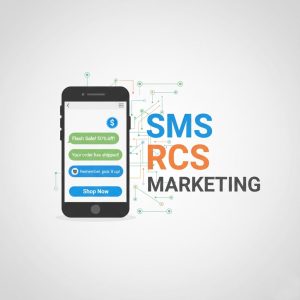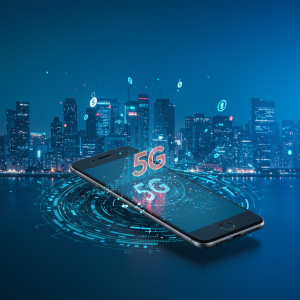Event Marketing Checklist for Beginners

Event marketing can seem daunting, especially if you’re new to the world of promotions and planning. How do you spread the word? Where do you market? What should you track? These are all questions many first-time event marketers wrestle with. The good news? With the right approach and a solid checklist, event marketing can become a manageable, even enjoyable, process.
This beginner-friendly guide will walk you step-by-step through creating and executing a successful event marketing plan. By the end of this blog, you’ll know exactly how to attract attendees, drive engagement, and get the most out of your event.
What is event marketing?
Event marketing is the practice of engaging an audience before, during, and after an event to maximize attendance, engagement, and outcomes. Whether it’s a webinar, trade show, seminar, or product launch, effective event marketing ensures more people show up and leave buzzing about your event.
By strategically targeting your audience and promoting the right message, event marketing can:
- Build brand awareness
- Generate leads
- Enhance networking opportunities
- Create memorable experiences for attendees
Now that you know what event marketing is, it’s time to explore how to do it effectively.
The ultimate event marketing checklist for beginners
1. Define your goals and audience
Before you start promoting your event, take the time to answer two critical questions:
- What do you hope to achieve?
Are you aiming to boost brand visibility, generate leads, secure sales, or something else? Defining clear, measurable goals provides direction for your marketing efforts.
- Who is your target audience?
Who do you want to attend your event? Consider demographics like age, occupation, industry, pain points, or preferences. For example, if you’re hosting a tech workshop, your primary focus might be software developers and IT professionals.
Understanding your audience allows you to tailor your messaging and promotions to the right people.
2. Create a compelling event page
Think of your event page as the hub for all your promotions. It’s the information center where potential attendees can learn about your event, register, and share details with others. Here’s what to include on your event webpage:
- Event name
Keep it clear, concise, and engaging. Avoid leaving attendees guessing about the purpose of your event.
- Date, time, and location
Spell out all the essential logistics, including how to attend if it’s virtual.
- Event highlights
From speakers and activities to key takeaways, highlight what makes your event worth attending.
- CTA buttons
Include a prominent “Register Now” or “Sign Up” button to simplify the process for visitors.
For added credibility, include testimonials from past attendees (if applicable) or even quotes from keynote speakers to encourage registrations.
3. Build a promotional timeline
Successful event marketing depends heavily on timing. Promoting your event too early can lead to waning excitement, while promoting too late risks missing your audience. Here’s a rough timeline to follow:
- 4-6 weeks out: Begin teaser promotions to announce save-the-dates and generate awareness.
- 2-4 weeks out: Launch full-scale promotions, sharing details about what attendees can expect and the value they’ll gain.
- Final week: Focus on last-minute reminders and urgency-based messaging (e.g., “Only 10 spots left!”).
Consistency is key, so create a schedule for when and where promotional efforts will roll out.
4. Use multi-channel marketing to spread the word
To maximize visibility, promote your event across a variety of platforms. Some effective channels for event promotion include:
- Email marketing: Send personalized invitations, registration reminders, and updates to your mailing list. Segment your audience for more targeted messaging.
- Social media: Create buzz with engaging posts, stories, and ads on platforms like Instagram, LinkedIn, and Facebook. Don’t forget to use event-specific hashtags!
- Content marketing: Write blog posts, guest articles, or promotional pieces to share your event’s themes and purpose.
- Paid ads: Use search ads or boosted social posts to reach relevant audiences who may not already know about your event.
- Influencer partnerships: Collaborate with local influencers, thought leaders, or industry experts to help spread the word to their network.
5. Encourage early engagement
Early engagement creates excitement before the event even starts. Here are some tactics to encourage participation ahead of time:
- Interactive posts: Use social polls, quizzes, or countdown timers on social media to build anticipation.
- Giveaways: Offer free tickets, exclusive swag, or discounts in exchange for early registrations.
- Shareable graphics: Provide your audience with visual content they can easily share on their own platforms.
The goal is to drive conversation and excitement leading up to your event.
6. Track and optimize your promotions
No marketing effort is complete without measuring its effectiveness. Use analytics tools to track how your campaign is performing:
- Monitor website traffic and registration conversions via Google Analytics.
- Check open and click-through rates for email campaigns.
- Use platform-specific metrics for social campaigns (e.g., engagement, impressions, or clicks).
If something isn’t working as expected (e.g., low sign-ups or poor engagement rates), pivot your strategy. For instance, consider testing different ad creatives, messaging styles, or offers to drive improved results.
7. Post-event engagement
The event may be over, but your marketing shouldn’t stop there. Post-event follow-ups can turn attendees into loyal advocates. Key actions to take after the event include:
- Thank attendees: Send a personalized email thanking them for attending.
- Share event highlights: Post photos, videos, or a recap blog to showcase the event’s success.
- Ask for feedback: Use surveys or polls to gather insights on what attendees enjoyed and where you can improve.
- Nurture leads: For non-attendees who registered interest but didn’t follow through, share a highlight reel and invite them to your next event.
Bring your event to life with strategic marketing
Event marketing doesn’t have to be a daunting process. With a clear plan, consistent messaging, and targeted channel strategies, you can execute a campaign that fills seats, builds brand awareness, and leaves attendees raving about your event. In this section, we’ll delve into some of the key elements that make up a successful event marketing strategy.
Define your target audience
Before you can start promoting your event, it’s important to have a clear understanding of who you want to reach. This includes demographic information such as age range, gender, and location, but also extends to interests, behaviors, and pain points that are relevant to your event. Understanding your target audience will help you determine the most effective channels for reaching them and crafting messaging that resonates.
Create compelling content
With so much noise in the digital landscape, it’s crucial that your event stands out from the rest. One way to do this is by creating compelling content that captures the attention of your target audience. This can include eye-catching graphics, engaging videos, and informative blog posts or articles.
To create compelling content, it’s important to first identify your event’s unique selling points (USPs). What makes your event different from others? Is it a new concept, an exciting location, or a well-known keynote speaker? Once you determine your USPs, use them as the foundation for your content strategy.





